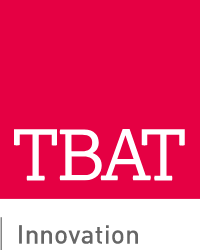


Chris Stuttle
Senior Consultant
As part of the ongoing reforms to R&D tax relief, HMRC has updated section CIRD150500, which deals with the overseas expenditure restrictions within the new R&D Expenditure Credit (RDEC) and Enhanced Research and Innovation Credit (ERIS) schemes.
For those who have been following the R&D reform process, much of the content will feel familiar. However, there are some subtle but important clarifications in the new version. These updates focus on how Northern Ireland companies are treated, the definition of overseas activity, and the circumstances where research carried out abroad can still qualify under CTA09/S1138A.
These aren’t just administrative tweaks. They’re part of HMRC’s wider effort to ensure that R&D tax relief primarily benefits innovation carried out in the UK, while still allowing flexibility for genuinely unavoidable overseas work.
The restrictions on overseas expenditure apply to Externally Provided Worker (EPW) payments and contractor costs. In essence, if the R&D activity or the workers performing it are located outside the UK, that spend may not qualify for tax relief unless a specific exception applies.
HMRC has provided more detail in CIRD137000 (for EPWs) and CIRD138000 (for contractors). These sections are key for understanding how connected and unconnected party relationships affect the claimable proportion of overseas costs, a frequent source of confusion for businesses and advisers.
Both the old and new versions confirm that “overseas” and “abroad” mean “not in the UK,” and that the UK is defined as England, Scotland, Wales, and Northern Ireland.
This definition is important for global businesses carrying out R&D across multiple locations. It makes clear that work done in British overseas territories, or by companies registered there, still counts as overseas for R&D tax purposes. The updated wording reinforces that the boundary is drawn by UK tax law, not by commercial arrangements or trading links.
Under both ERIS and the new RDEC scheme, expenditure on:
is excluded from qualifying expenditure unless the statutory exception under CTA09/S1138A applies.
This restriction sits at the heart of the government’s reform of R&D relief. It’s intended to encourage more R&D activity, skills, and investment to remain within the UK. It also brings the UK’s approach in line with international practice, where tax reliefs typically support domestic innovation.
One of the most noticeable updates in the new guidance relates to companies registered in Northern Ireland.
The previous version referred directly to the Research and Development (R&D) Relief (Chapter 2 Relief) Regulations 2024 and explained that, unless a company opted out, overseas restrictions did not apply to Chapter 2 (ERIS) qualifying expenditure.
The new version simplifies this, stating that:
“NI-registered companies claiming under ERIS are subject … [and] unless a company can and does opt out, the overseas restrictions do not apply to its Chapter 2 (ERIS) qualifying expenditure.”
The overseas restrictions remain in place for Chapter 1A (new RDEC) qualifying expenditure.
This distinction reflects Northern Ireland’s continued alignment with certain EU State Aid rules under the Windsor Framework. It allows NI companies to claim relief even where part of their R&D work is conducted abroad, while companies in Great Britain remain bound by the tighter restrictions.
Businesses that operate across both regions will need to assess which scheme applies and decide whether opting out of Chapter 2 is the right choice.
In addition, there is still a three-year limit on the total amount that can be claimed under ERIS, as explained in CIRD125000. This helps HMRC monitor long-term claims and prevent excessive accumulation of relief where R&D projects run over several accounting periods.
This statutory exception is a key safeguard for companies that have no choice but to conduct R&D overseas. It applies where:
This exception is especially relevant to sectors such as pharmaceuticals, life sciences, renewable energy and advanced manufacturing, where environmental factors, regulations, or testing frameworks sometimes make overseas work unavoidable.
According to CIRD151000, “conditions” can include:
This list is not exhaustive but gives a framework for deciding when overseas R&D may be necessary.
Conditions that relate only to cost or the availability of workers must be ignored, and that exclusion list is exhaustive. In other words, work cannot be moved overseas simply because it is cheaper or easier to find the right staff. The question is whether the overseas work is essential, not convenient.
HMRC confirms that legal or regulatory requirements can include:
For example, if a drug trial must be supervised by a foreign regulator, or a new product needs testing under local safety standards, this would meet the test. The guidance makes clear that both formal legal obligations and practical regulatory realities can justify overseas R&D, as long as companies can provide evidence.
“Necessary” isn’t defined in law and takes its normal meaning. If R&D cannot proceed without a certain condition being met, that condition is considered necessary.
Each activity within a project must be considered separately. This means businesses should document their reasoning clearly, showing why specific activities could not have taken place in the UK. Planning records and internal discussions can help demonstrate this.
What matters is the situation at the time the R&D is carried out. HMRC expects companies to show that they considered UK alternatives and to provide evidence that overseas work was essential.
Feasibility studies, project plans, regulatory correspondence and internal records can all support this assessment.
Whether it would be wholly unreasonable to replicate conditions in the UK depends on the circumstances of each company and project.
Time pressure, short sample lifespans, or contractual obligations may all be valid factors. Evidence might appear in project documentation, commercial contracts or internal communications.
HMRC recognises that smaller businesses may face different constraints from larger ones, so context matters. The test is about whether it would have been genuinely unreasonable for that company to replicate the conditions in the UK.
For example, HMRC points to CIRD152000, which provides illustrations of how this test applies in practice.
This update reinforces the government’s push to focus R&D tax relief on UK-based innovation while allowing flexibility where overseas activity is genuinely unavoidable.
For companies, it highlights the growing importance of evidence and documentation. Businesses will need to clearly explain why work was conducted abroad and provide proof that it met the “necessary” and “wholly unreasonable” tests.
Advisers should also pay close attention to the differences between the ERIS and RDEC schemes, particularly where Northern Ireland’s special treatment applies. Misunderstanding these details could lead to errors in claims or even the disallowance of relief.
The revised CIRD150500 offers greater clarity but also raises the bar on compliance. Companies should treat all overseas R&D activity as exceptional and ensure their decision-making is well-documented.
By planning projects with these tests in mind and keeping strong evidence from the start, businesses can strengthen their R&D tax credit claims and reduce the risk of HMRC challenges.
Read the full guidance: CIRD150500 – R&D Tax Reliefs: reformed reliefs: overseas restrictions: overview – HMRC internal manual – GOV.UK
Please get in touch with our TBAT team today if you would like any support with understanding the overseas restrictions and the HMRC guidance.